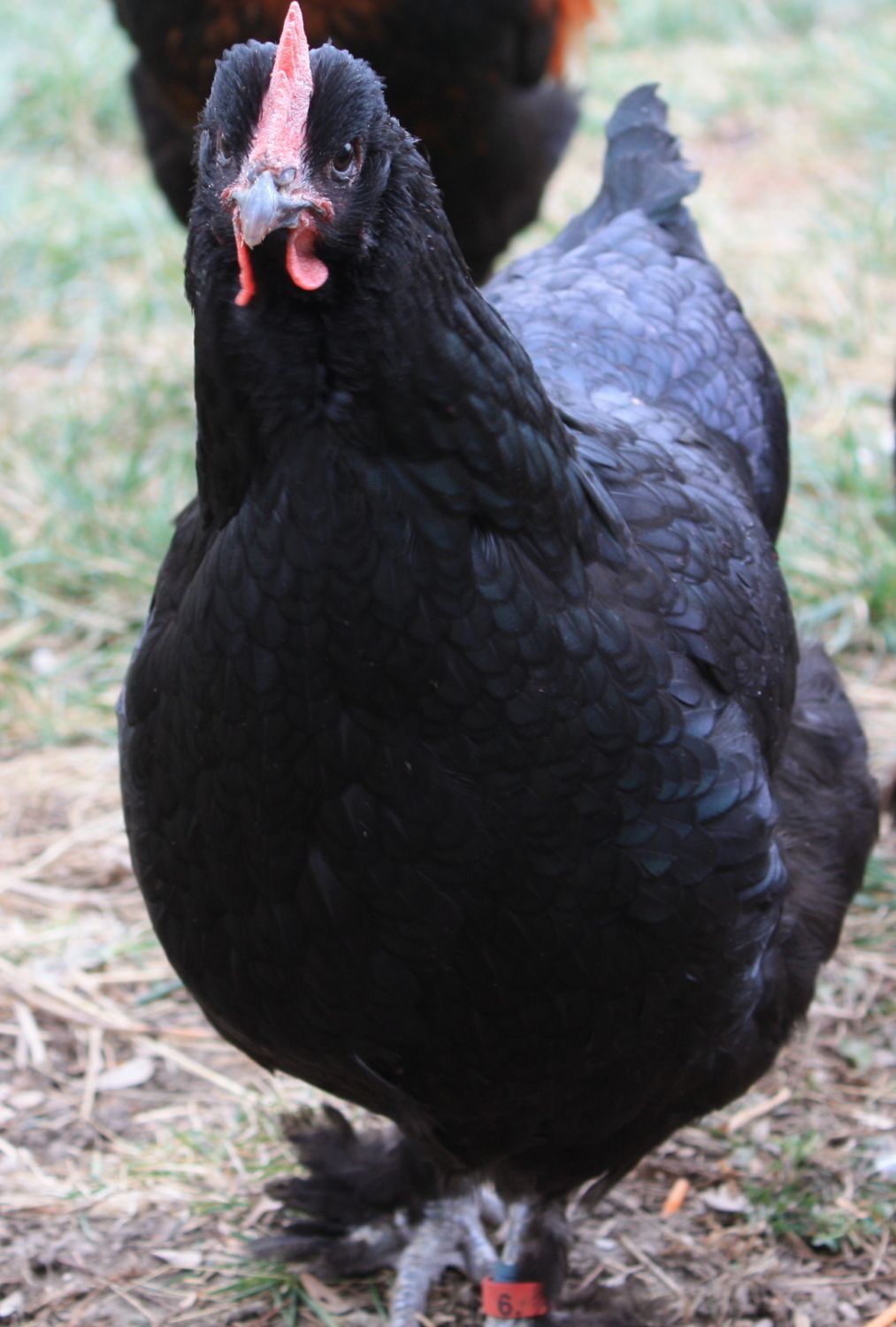- Thread starter
- #44,311
Navigation
Install the app
How to install the app on iOS
Follow along with the video below to see how to install our site as a web app on your home screen.
Note: This feature may not be available in some browsers.
More options
You are using an out of date browser. It may not display this or other websites correctly.
You should upgrade or use an alternative browser.
You should upgrade or use an alternative browser.
Marans Thread - breed discussion & pictures are welcome!
- Thread starter Wynette
- Start date
Winniem~
He might be a Black Copper from Blue Copper matings or he could be a very dark Blue Copper that appears black. The only way you will know for sure what color he is, will be to wait until he is old enough to test mate and test mate him to a bird that you know is genetically black....if blue offspring are produced then he is blue....if only black offspring are produced then he is black.
Blue does not breed true...therefore a person will get blue, black and splash offspring from a blue to blue pairings.
Couple things to watch for as he is maturing is his black color to just not be or seem truly black anymore, it may lighten a bit as he matures and reaches sexual maturity. You may also see edging on his feathers which is another indicator as Black Coppers should not have edging. I start to see these changes around 5-6 months on my birds that are truly blue, but appear black.
Oh nooooooooo! I was so proud my BCM roo had such lovely edging on his back!
The chicken says: "I seeeee you!"Head structure is something I breed for in all my breeds and feel it is very important as it can change the overall look of a bird very quickly. Here's an example of the head shape I am breeding for and am getting more consistently in the Marans. You are right that there is a large range within the Marans when it comes to head shape.


Ooh, I'm jealous, my maran's heads aren't nearly that pretty.
Last edited:
Sharpie makes a silver pen, that is a whole lot easier to see than the black on an egg too. But since it's quite toxic, mark quick, small, and fan the egg afterwards to get rid of the chemicals evaporating. Once it's dry, I don't think it hurts anything.
I just use a pencil, and look in my 'bator with a flashlight.
I've noticed the same thing. It seems the darker they are, the more easily the tones rub off. I get matte finish eggs like this from one hen that is pure W. Jeane (original lines). Drives me batty. If I could jjjjuuuusssstttt put a glossy finish on them....! Pretty egg!!
You could try buffing them.

THe good news is shank feathering is great! A few without feathers to the end of the toe but most have good outer toe feathers. I may start selecting for longer toes next year. THanks for confirming choosing for size was the right thing!It's a really good question, Keara. Shank feathering (too much/too little) and size are my first two cull decisions with youngsters. From my own personal experience, these two things are "knowns" early on.
thanks Wynette!
Mine do that too, I think it's kinda like the chicken version of a sneeze. Had me worried at first, but now I think it's cute. Almost kittenish.I have a hen in my layer flock that makes a 'piping' noise, but is totally healthy. From what I'd deduced, she only does it when she eats, so I assume she must have a misshapen pipe or something and will occasionally get food lodged or maybe restricts the breathing a bit.
Last edited:
Hi all,
Do any of you know about the BC Marans bred byBrian Parks of Fraiser Creek Farm in Corvallis, Oregon? I'm new to Marans and was hoping to get some nice birds for laying, not necessarily for breeding.
Do any of you know about the BC Marans bred byBrian Parks of Fraiser Creek Farm in Corvallis, Oregon? I'm new to Marans and was hoping to get some nice birds for laying, not necessarily for breeding.
Last edited:
thanks lady, I just might have to.Vicki~ I would enter those eggs in an egg show....no doubt.
Zanna~ I hope you do wonderfully with your egg show entry.
no problem, I am happy to try and help. I'm a visual person, so figure a lot more can be learned from a photo in some cases than a description.thanks for posting pictures. It's easier to compare mine, when I see what they are supposed to be like.
New posts New threads Active threads
-
Latest threads
-
white powdery substance on my roosters waddle and comb?Anyone know?
- Started by Callacda
- Replies: 0
-
-
Seeking Investment Ideas in the Poultry Sector - Your Expertise is Needed!
- Started by BasilA
- Replies: 5
-
-
-
-
Threads with more replies in the last 15 days
-
-
Question of the Day - Thursday, August 14th, 2025
- Started by casportpony
- Replies: 75
-
-
Ended BYC Poultry Caption Contest 08-08-25 Pic by Molpet
- Started by TwoCrows
- Replies: 62
-
-
×


